Yermo is an unincorporated community in San Bernardino County in the California’s Mojave Desert. Highway 15 runs east-west through the area. On the south side of the highway lies Liberty Sculpture Park, where the arson attack happened in July 2021. The fire is alleged to have been started by a Chinese secret police agent.
Showcasing giant sculptures and other artistic pieces of the many different aspects of Chinese people’s fight for freedom and democracy in recent years, many tourists have traveled on Highway 15 from either Los Angeles or Las Vegas to visit the park.
The Fire
In the early evening on July 24, 2021, one sculpture in Liberty Sculpture Park was destroyed by fire. It was a giant human-head shaped sculpture named “CCP virus.”“It was heartbreaking to watch it burning down,” said artist Jonas Yuan, a professional photographer in his 30s, who personally witnessed the fire. He was one of the volunteer assistant artists who helped build the sculpture and work at the park. Yuan told The Epoch Times that construction took artists and volunteers more than seven months. Over the last two years, Yuan had devoting his time as a volunteer to help build the park.
The front portion of the sculpture consisted of half of Chinese leader Xi Jinping’s face, while the other half was the face of an evil-looking skeleton. There were pins depicting COVID-19 spike proteins all around the sculpture’s cranium.
The sculpture was completed on June 4, 2021—the 32th anniversary of 1989 Tiananmen Square Massacre. It was about 6 feet in height, and made of steel and fiberglass. It was on display for only two months before it was destroyed by the fire.
Yuan said he noticed signs that the arson attack was coming, having reported suspicious activities to the local police a week before the fire.
On July 17, Yuan was at the park conducting his usual duties, when he found that one of the spike-proteins of the sculpture had dropped to the ground. The spike was made from a steel reinforcement bar and firmly epoxied to the sculpture. Yuan went to inspect when he found items like angle grinders, gloves, safety goggles, and one-hundred-yards of quarter-inch diameter steel cable laying around the sculpture. Yuan also found a piece of a broken D-ring and a hole in the back of the sculpture.
To Yuan, it looked as if someone had tried to use a car and the steel cable connected to the sculpture to pull the statue down because the D-ring was broken. After that, staff at the park were prepared for another attempt at vandalism. But they did not know when and how things would happen.
The Chinese secret police came back and set the park on fire on July 24. The arson took place on a Friday at dinner time when the park was empty. Artists and volunteers near the park rushed to the site, but were not able to put out the fire. They were left watching their artwork being destroyed by the flames.
“The communist regime is afraid of two things: large-scale uprising and international embarrassment,” Yuan said on why he believes the Chinese secret agents came to destroy the virus sculpture.
An Artist’s Fight for China’s Democracy
“This park represents the die-hard spirits [working] for China’s democracy,” said Weiming Chen, the founder and chief artist of the Liberty Sculpture Park. The main exhibitions of the park are giant sculptures made from a variety of materials.After the CCP Virus sculpture was burned down in July 2021, it was remade and named CCP Virus II. The new one is made of more than 35,000 pieces of steel reinforcement bars connected together by more than 80,000 welding points. In the words of the volunteers who helped build the new sculpture: they wanted to build the new sculpture in the way that the Chinese secret police would never be able to burn it down.
The new CCP Virus II sculpture was constructed by a group of volunteers who spent more than seven months rebuilding the work. It was completed on June 4 this year, on the one-year anniversary of the original one.
The new sculpture is about three stories in height (27 feet), including its concrete masonry base.
Besides the CCP Virus sculpture, the park also has several other giant statues.
The centerpiece of the park is the 64 Massacre Monument, which is made of stainless steel. It is 6.4 meters (21 feet) high and set on a 2.5 meters (8.2 feet) high concrete base, bringing the total height of the sculpture to 8.9 meters (29 feet) from the ground. The total height (8.9 m) and the sculpture height (6.4 m) together reflect June 4, 1989; the date of the Tiananmen Square Massacre.
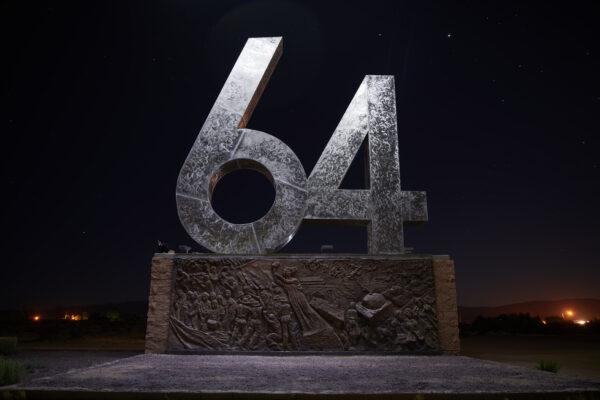
On June 4, 1989, the CCP regime sent its military with tanks and soldiers with machine guns to Tiananmen Square in Beijing, and opened fire on the student-led democracy movement.
The front surface of the monument base is decorated with a full-size relief reflecting the history and people of the massacre. A steel plate was anchored to the back surface of the base, providing information and explanations of China’s 1989 democracy movement. Engraved on the plate are also 203 names of the victims who were killed in the massacre.
Chen said that the real total number of the death victims were a lot more than 203. The majority of victims’ names have not yet been identified because many victims’ families are afraid of speaking out under political pressure from Beijing’s authorities.
Chen said that the 64 monument was built for victims’ families to mourn and to remember their loved ones killed in the massacre.
Right next to the 64 monument is a live size statue of the tank man—a well-known figure of the 1989 massacre. The young men stood before a line of tanks all by himself trying to stop the Chinese military pushing into Tiananmen Square. The incident was caught by a Western reporter’s camera, but the tank man’s real name and whereabouts were never known to the world.
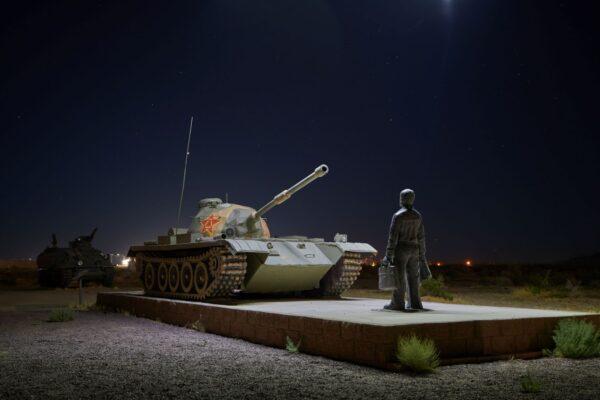
The 64 monument is located next to the tank man sculpture, while on the other side of the tank man sculpture is a retired amored vehicle. Chen said that a supporter purchased the vehicle in Europe and shipped it to California to donate to the park.
Another monument standing in the park is the sculpture named “Liberate Hong Kong, Revolution of Our times.” It is 6 meter (19.7 ft.) high and set on a 2 meter (6.5 ft.) high concrete masonry base. The name of the sculpture came from the slogan of 2019 Hong Kong pro-democracy movement.
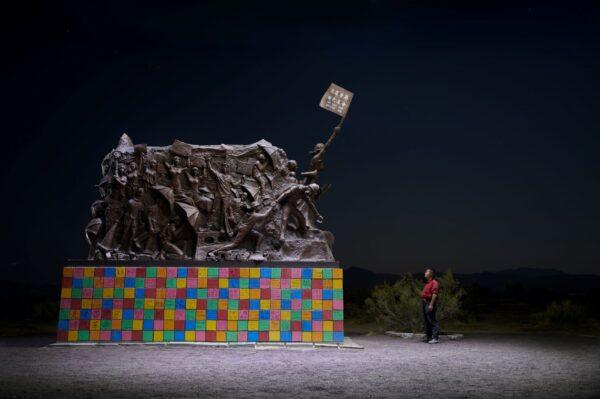
Chen has been a long-time supporter of Hong Kong’s democratic movement. In 2010, Chen sent two of his sculptures to Hong Kong for the annual memorial service for the Tiananmen Square Massacre.
One sculpture was a copy of the statue of Democracy Goddess, which was first erected at the Tiananmen Square by students in 1989 but later torn down by the Chinese military. Another one was a relief that told the story of the massacre. Both sculptures were confiscated by Hong Kong’s police authority after they were shipped to Hong Kong, but later returned because of Hong Kong people’s protest.
Give Me Liberty, or Give Me Death
Facing south and located at the middle of the Liberty Sculpture Park stands the Crazy Horse statue. The giant head-shaped statue was the very first erected artwork in the park, commemorating the indigenous leader of the native Americans.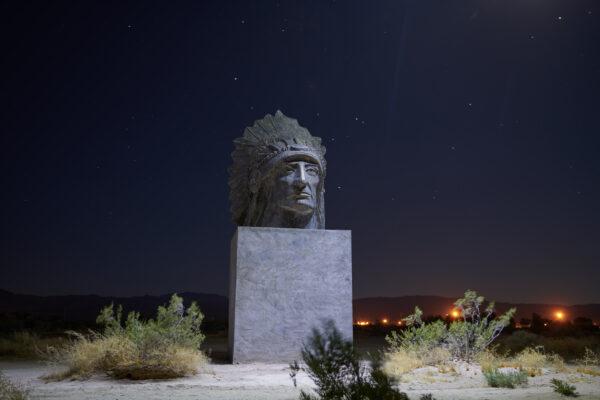
Carved on back of the sculpture are the words: “Give Me Liberty, or Give Me Death.”
When asked what is in common between Crazy Horse and China’s freedom fighters, Chen answered: “They all fight for liberty. Liberty is without borders.”
Chen told The Epoch Times that as the leader of native Americans, Crazy Horse’s fight for freedom and independence earned respect not only from his own people, but also from his enemy: the United States federal government.
Not far from the Crazy Horse sculpture is a single standing man statue, the sculpture of Li Wangyan. Li was a pro-democracy and pro-labor rights activist who served 21 years in prison after joining the Tiananmen Square protests in 1989. Li lost both his vision and hearing during his jail sentence.
In 2012, after being released and receiving a television interview in which he called for support to the victims of Tiananmen Square Massacre, he was found hanged in a hospital room. The local police authority initially claimed that he committed suicide, but later revised it to an “accidental death.”
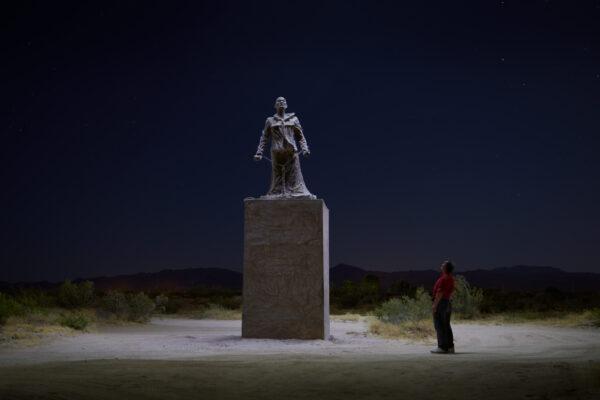
In the interview, Li made a strong statement of his unshakable stand for democracy: “I shall never yield even if I am to be beheaded.” The interview was given to a Hong Kong media.
Just like Li and Crazy Horse, Chen himself was also a freedom fighter. Between 2012 and 2014, Chen traveled to Syria four times to join the associated Syrian anti-Assad militias to support the Syrian people’s fight against the Syrian dictatorship. He was known as the only Chinese fighter in the Syrian opposition force.
Chen graduated from the Central Academy of Arts and Crafts, one of the top art colleges in China. Before he left China, he was already a well-known sculptor. One of his artworks was a group of sculptures named “Dancing with Music,” which still standing in Wulin Square of Hangzhou City in China today.
Unlike many well-known sculptors in China who have made millions in wealth, Chen chose to leave China in 1988. He went to New Zealand, a popular country as a destination chosen by many people who left China in the 80s and 90s.
Chen quickly became famous in New Zealand. He was known as the Chinese immigrant sculptor who built the statue of mountaineer Sir Edmund Hillary in Hillary Square, Orewa, in 1991. On May 29, 1953, Hillary was one of the first two climbers in history who were confirmed to have reached the summit of Mount Everest.
Born in 1956, Chen’s father was a college instructor and his mother was a school teacher teaching music and arts. Chen’s father was sent to a labor camp during China’s anti-rightist campaign in the late 50s. Launched by Chairman Mao Zedong, the campaign led by the CCP targeted those intellectuals who appeared to favor capitalism, or were against the CCP’s one-party rule political system. The political movement saw to the deaths of tens of thousands of intellectuals in CCP’s labor camps.
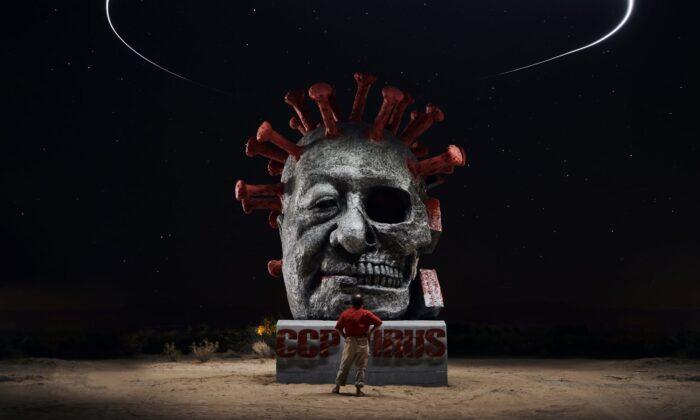
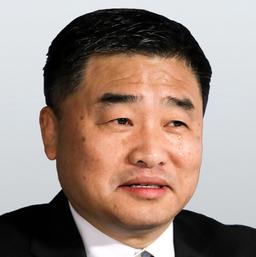
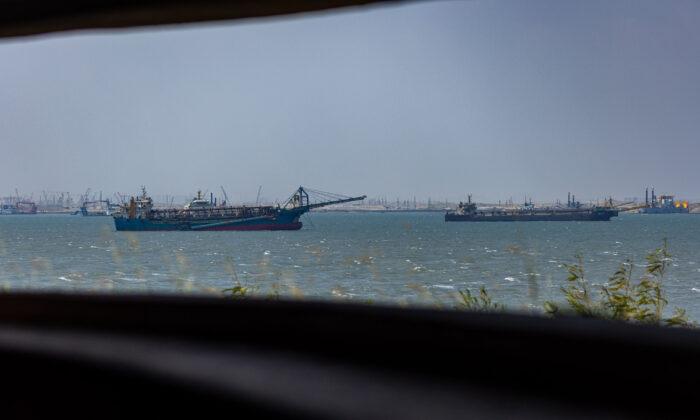
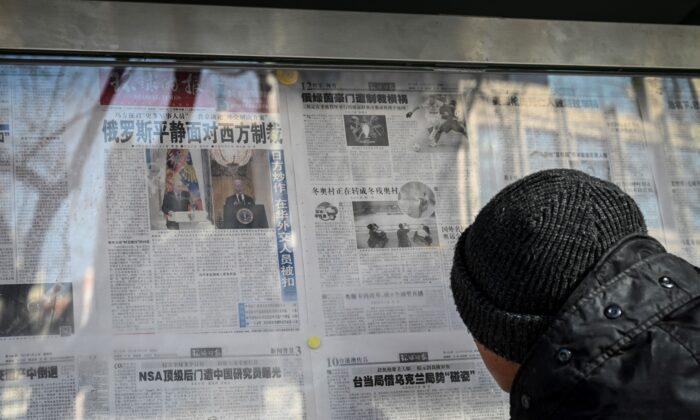
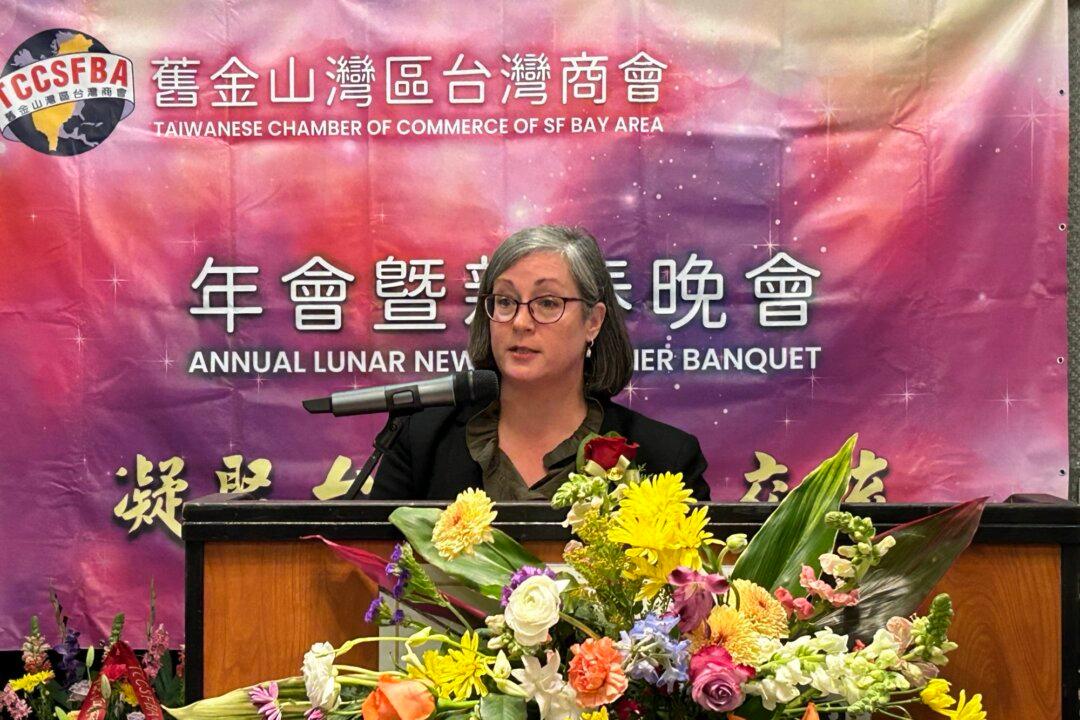
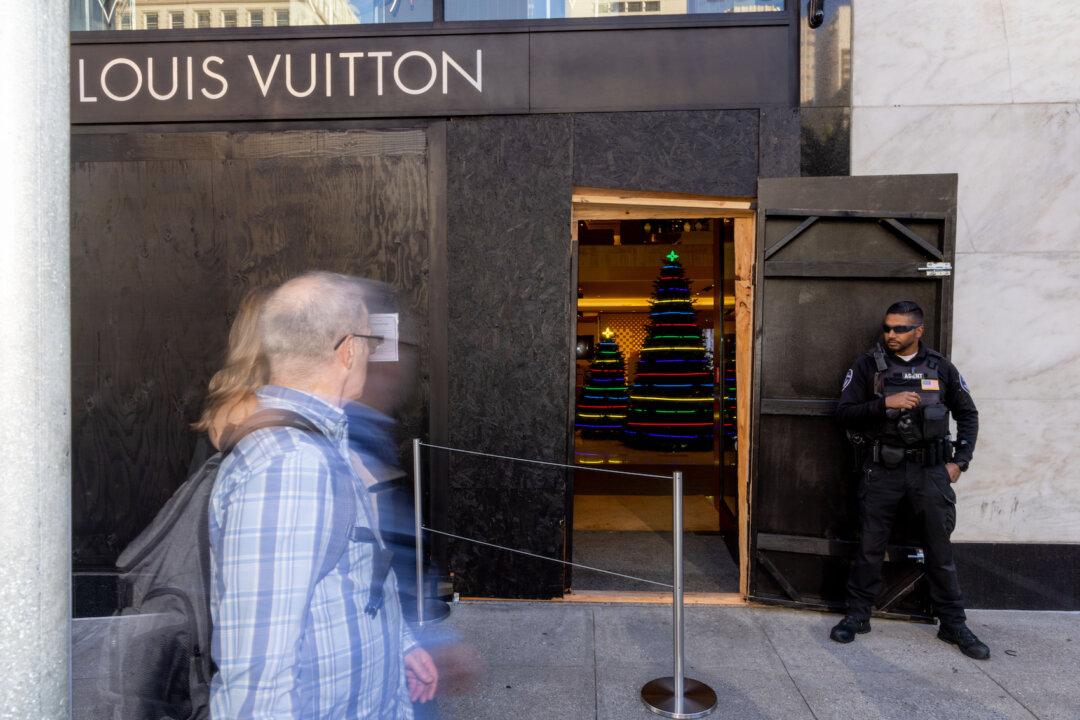
Friends Read Free